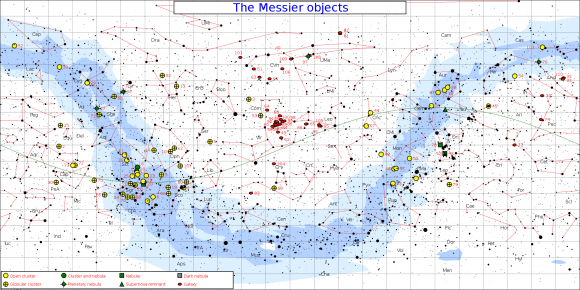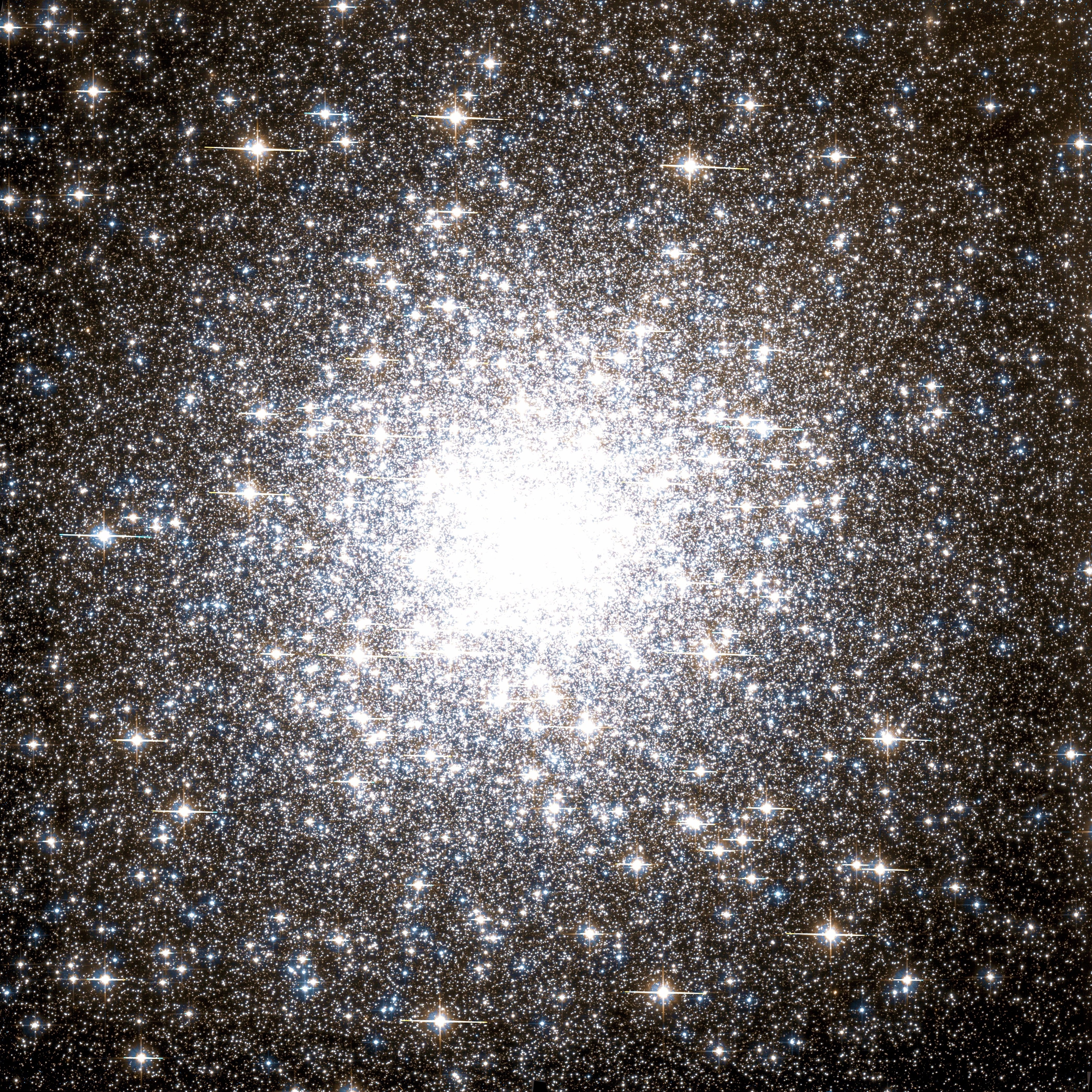In the 18th century, while searching the night sky for comets, French astronomer Charles Messier kept noting the presence of fixed, diffuse objects in the night sky. In time, he would come to compile a list of approximately 100 of these objects, with the purpose of making sure that astronomers did not mistake them for comets. However, this list – known as the Messier Catalog – would go on to serve a more important function.
In addition to cataloging some of the most beautiful objects in the night sky, this list would come to be an important milestone in the discovery of Deep Sky Objects. The second object to make the list is known as Messier Object 2 (aka. M2 or NGC 7089), one of the largest globular cluster in the Milky Way, and which is located in the constellation Aquarius.
Description:
As one of the largest known globular clusters, Messier 2 is a rich, round concentration of gravitationally bound stars that orbits the galactic core. Located about 33,000 light years (10,000 parsecs) from our Solar System, this cluster measures some 175 light-years in diameter and is believed to contain about 150,000 stellar members – including 21 known variable stars. Its brightest stars are red and yellow giant stars.
Because its members are so tightly packed together, it has a density classification of II – which is reserved for clusters that are particularly rich and compact. And like most globular clusters, M2’s central region is highly compressed, measuring just 3.7 light years in diameter. It’s tidal influence, on the other hand, has a radius of 233 light years, beyond which members stars would escape due to the influence of the Milky Way’s tidal forces.
Positioned well beyond the galactic center, M2 is also noted for its elliptical shape, and is believed to be as much as 13 billion years old.

History of Observation:
M2 was first discovered by Jean-Dominique Maraldi in 1746 while observing a comet with Jacques Cassini. According to Cassini’s notes, which detail the discovery, the two believed it to be a “nebulous star” at the time:
“On September 11 I have observed another one [nebulous star] for which the right ascension is 320d 7′ 19″ [21h 20m 29s], and the declination 1d 55′ 38″ south, very near to the parallel where the Comet should be. This one is round, well terminated and brighter in the center, about 4′ or 5′ in extent and not a single star around it to a pretty large distance; none can be seen in the whole field of the telescope. This appears very singular to me, for most of the stars one calls nebulous are surrounded by many stars, making one think that the whiteness found there is an effect of the light of a mass of stars too small to be seen in the largest telescopes. I took, at first, this nebula for the comet.”
The object was independently recovered by Charles Messier in 1769, though he too mistook it for something else. In his notes, which were also taken on September 11th (fourteen years later), he described the object as a nebula:
“On September 11, 1760, I discovered in the head of Aquarius a beautiful nebula which doesn’t contain any star; I examined it with a good Gregorian telescope of 30 pouces focal length, which magnified hundred four [104] times; the center is brilliant, and the nebulosity which surrounds it is round; it resembles quite well the beautiful nebula which is located between the head and the bow of Sagittarius: It extends 4 minutes of arc in diameter; one can see it quite well in an ordinary telescope [refractor] of 2 feet [focal length]: I compared its passage of the meridian with that of Alpha Aquarii which is situated on the same parallel; its right ascension was derived at 320d 17′, and its declination at 1d 47′ south. In the night of June 26 and 27, 1764, I reviewed this nebula for a second time; it was the same, with the same appearances. This nebula can be found placed in the chart of the famous Comet of Halley, which I observed at its return in 1759 (b).”

Ultimately, it was William Herschel who finally resolved Messier 2 into the object we recognize today. This took in 1783, where – according to his notes – he was able to resolve individual stars:
“The scattered stars were brought to a good, well determined focus, from which it appears that the central condensed light is owing to a multitude of stars that appeared at various distances behind and near each other. I could actually see and distinguish the stars even in the central mass. The Rev. Mr. Vince, Plumian Professor of Astronomy at Cambridge, saw it in the same telescope as described.”
Locating Messier 2:
Messier 2 is located approximately 5 degrees (about 3 finger widths) north of Beta Aquarii, on the same declination as Alpha Aquarii. M2 is sufficiently bright enough to be seen in urban settings where light pollution is a factor, and can alternately be found by looking about 10 degrees (a fist width) south/southwest of Epsilon Pegasi (Enif).
Using binoculars, it will appear as a large, fuzzy ball with little or no resolution. To amateur astronomers using small telescopes, individual stars will be visible around the outer edges, with resolution improving significantly with aperture size of 6” or more. Those with large telescopes, and who are looking for a challenge, should look for a dark dust lane which crosses the north-east edge of this globular cluster.

Of course, John Herschel saw it as “It is like a heap of fine sand!” which is perhaps as apt an description as can be rendered. Through a large telescope, the globular cluster does resemble a glittering mass of sparkling granules.
And for your convenience, here are the vital statistics of this globular cluster:
Object Name: Messier 2
Alternative Designations: NGC 7089, GC 4678, Bode 70
Object Type: Class II Globular Cluster
Constellation: Aquarius
Right Ascension: 21 : 33.5 (h:m)
Declination: -00 : 49 (deg:m)
Distance: 33 (kly)
Visual Brightness: 6.5 (mag)
Apparent Dimension: 16.0 (arc min)
Good luck searching for this and other Deep Sky Objects!
We have written many interesting articles on Messier Objects here at Universe Today. For instance, here’s Tammy Plotner’s Introduction to the Messier Objects, M1 – The Crab Nebula, and David Dickison’s articles on the 2013 and 2014 Messier Marathons.
Be to sure to check out our complete Messier Catalog.
For more information, check out the SEDS Messier Database.

